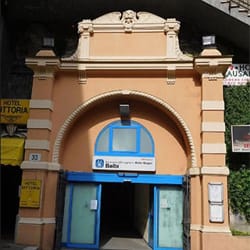Germany is in the middle of election season with polls being held in various states. Berlin, however, has a somewhat special status as it is both a state and a city, so a senate election and district elections are held at the same time.
District elections are held to elect mayors for each of the 12 districts. Citizens from other EU countries who have a registered address in Germany and citizens who hold German nationality aged 16 years or more are eligible to vote. Persons from outside Germany and the EU are not eligible to vote, even if they are long-term residents. During the election campaign, the various parties try to buttonhole voters, putting up street stalls in every district and approaching them in front of supermarkets, car parks, or on downtown streets.Parties may put up placards for electioneering purposes during the seven weeks up to the election. The locations for the placards are very carefully selected. A particularly large number of placards are put up alongside roads where there are always traffic jams. This is because people have lots of time to do nothing but look at the ads in places like that.
Big placards lined up roadside
You also see placards crowded into locations for a specific target audience. For example, the front of schools is a popular location for electioneering aimed at average families.
Placards aimed at families
And parties such as the far-right wing NPD provocatively put up placards in front of mosques and similar locations. In such instances the placards are fixed very high up, otherwise they are soon destroyed. It’s quite amusing to see a placard put up in direct opposition to the nearby poster of an opposing candidate. Poking fun at their opponents’ slogans, placards like that criticize or directly contradict them. They are put up late in the campaign, mostly just before voting, and particularly when the race is tight, to draw in undecided voters.
The poster at the bottom is for the sitting Mayor of Kreuzberg. The poster at the top is for another party but has an identical design and quotes the Mayor as saying “I don’t really have a plan.”
The placard at the top is for a far-right wing party while the one below it is for a party that heckles that party. “A Nazi could be hanged here.” (a pun on hanging placards and death by hanging.)
The placard wars offer minor, low profile parties such as Die Violetten (“The Violets”) and the Animal Protection Party the opportunity to appeal to voters. And for those who still can’t make up their mind about which party to pick, or don’t want to take the trouble to read party manifestos, there is Wahl-O-Mat, a simple online voting advice app. By selecting from among the three responses, agree, disagree, and neutral, of the 21 parties participating in the election to each of the questions devised by the Federal Agency for Civic Education, the app selects the party with the ideas closest to yours, based on those responses. Except for absentee voters, those eligible have casted their votes on Sunday at public centers, schools and city halls.


































































